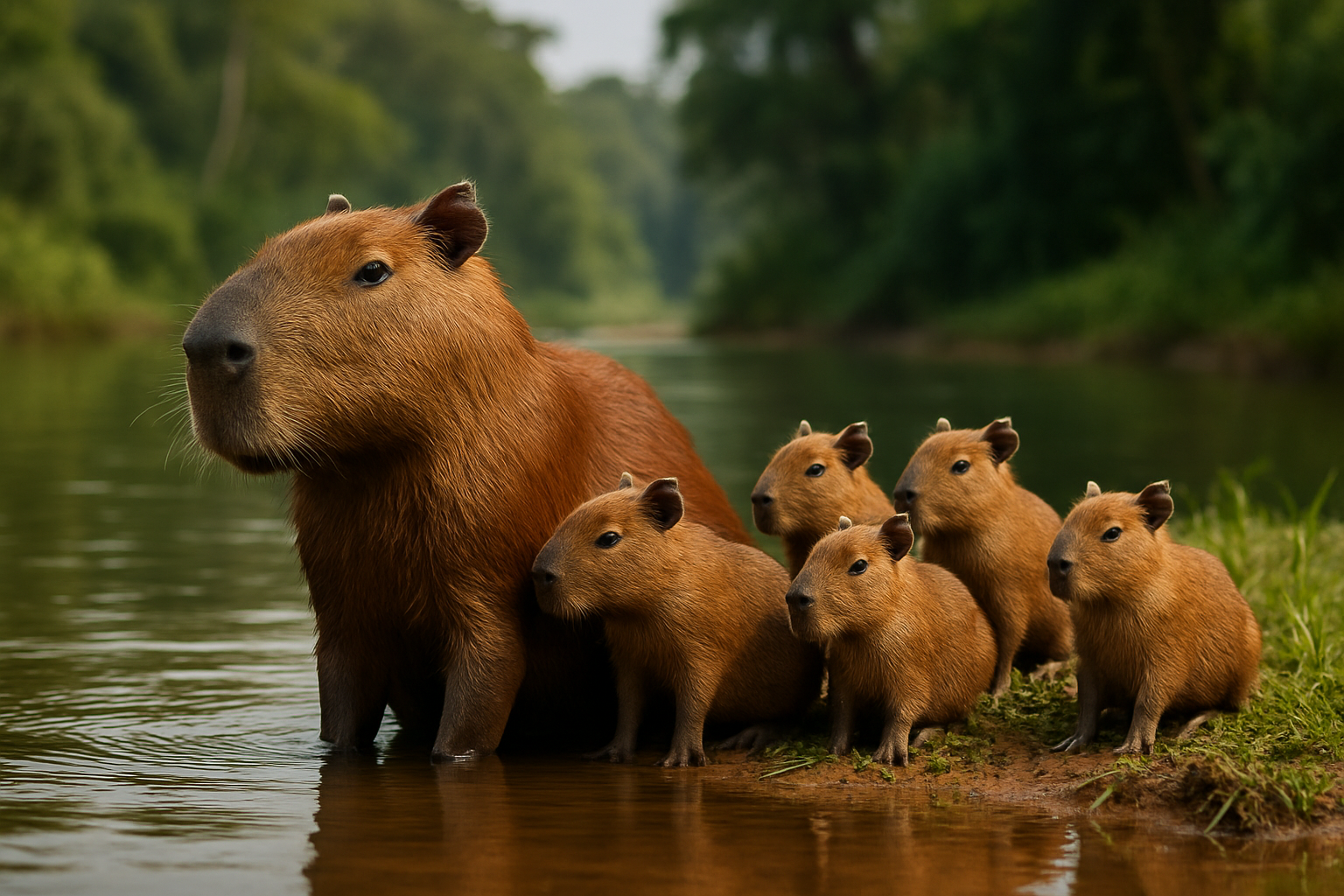The Fascinating World of Capybara Social Dynamics
Venture into the captivating realm of the world's largest rodent, the capybara, and uncover the intricate social structures that define their unique way of life. These gentle giants, native to South America, have captured the hearts of animal enthusiasts worldwide with their friendly demeanor and surprising social complexity. From their harmonious group living to their innovative communication methods, capybaras offer a fascinating glimpse into the sophisticated social dynamics of the animal kingdom.

The Hierarchy of Capybara Society
At the heart of capybara social dynamics lies a complex hierarchical structure. Capybara groups, known as herds, can consist of anywhere from 10 to 40 individuals, with some larger aggregations reported in ideal habitats. Within these herds, a strict pecking order is established and maintained through various social interactions. The dominant male, often the largest and most experienced member of the group, sits at the top of this hierarchy. He is responsible for protecting the herd from predators, mediating conflicts, and maintaining group cohesion.
Communication: The Glue of Capybara Communities
Capybaras have developed a rich repertoire of vocalizations and body language to facilitate their complex social interactions. From high-pitched whistles to low grunts, these rodents use a variety of sounds to convey different messages. Interestingly, researchers have identified over 20 distinct vocalizations in capybara communication. These sounds serve multiple purposes, including alerting the herd to potential dangers, coordinating group movements, and even expressing contentment during social grooming sessions.
The Role of Scent in Capybara Society
While vocalizations play a crucial role in capybara communication, scent marking is equally important in maintaining social bonds and territorial boundaries. Capybaras possess a unique scent gland, known as the morillo, located on top of their snouts. This gland secretes an oily substance that capybaras use to mark their territory and communicate with other members of their group. By rubbing their morillo on various objects in their environment, capybaras leave behind chemical signatures that convey information about their identity, social status, and reproductive state.
Cooperative Living: The Capybara Way
One of the most fascinating aspects of capybara social dynamics is their highly cooperative lifestyle. These animals engage in a variety of collaborative behaviors that benefit the entire herd. For instance, capybaras take turns keeping watch for predators while others graze or rest. This sentinel behavior ensures the safety of the group and allows individuals to feed and relax with reduced vigilance. Additionally, capybaras engage in communal care of young, with females often nursing each other’s offspring. This alloparental care system increases the survival rate of young capybaras and strengthens social bonds within the herd.
The Capybara’s Social Calendar
Capybara social life follows a distinct daily rhythm, influenced by environmental factors and the group’s needs. Mornings and evenings are typically dedicated to feeding, with the herd grazing together in open areas. During the heat of the day, capybaras retreat to water bodies to cool off and engage in social activities. These aquatic interludes serve multiple purposes, from temperature regulation to social bonding. Capybaras can often be seen floating in groups, with individuals resting their heads on each other’s bodies – a behavior that not only helps them stay afloat but also reinforces social connections.
Conflict Resolution in Capybara Society
Despite their generally peaceful nature, conflicts do arise within capybara herds. However, these social rodents have developed sophisticated mechanisms for resolving disputes without resorting to serious violence. Ritualized displays of dominance, such as chasing or mock fighting, often suffice to settle disagreements. In more serious conflicts, the dominant male may intervene to restore order. This system of conflict resolution helps maintain group harmony and ensures the long-term stability of the herd.
The Impact of Human Activity on Capybara Social Structures
As human populations expand and encroach upon capybara habitats, these social animals face new challenges. Changes in land use, such as the conversion of natural habitats to agricultural land, can disrupt capybara social structures by altering group sizes and composition. In some areas, increased human presence has led to the fragmentation of capybara populations, potentially affecting their social dynamics and genetic diversity. Conservation efforts aimed at preserving capybara habitats and maintaining connectivity between populations are crucial for ensuring the continued existence of these remarkable social structures.
Capybaras as a Model for Social Evolution
The complex social dynamics of capybaras offer valuable insights into the evolution of social behavior in mammals. By studying these highly social rodents, researchers can gain a better understanding of the factors that drive the development of cooperative living and complex communication systems. The capybara’s success as a social species, despite being a large rodent in predator-rich environments, highlights the adaptive value of group living and social cooperation.
In conclusion, the social dynamics of capybaras represent a fascinating example of complex animal societies. From their hierarchical structure and sophisticated communication methods to their cooperative behaviors and conflict resolution strategies, capybaras demonstrate the intricate ways in which social living can evolve. As we continue to study and appreciate these remarkable creatures, we gain not only a deeper understanding of animal behavior but also valuable insights into the fundamental principles of social organization in the natural world.





